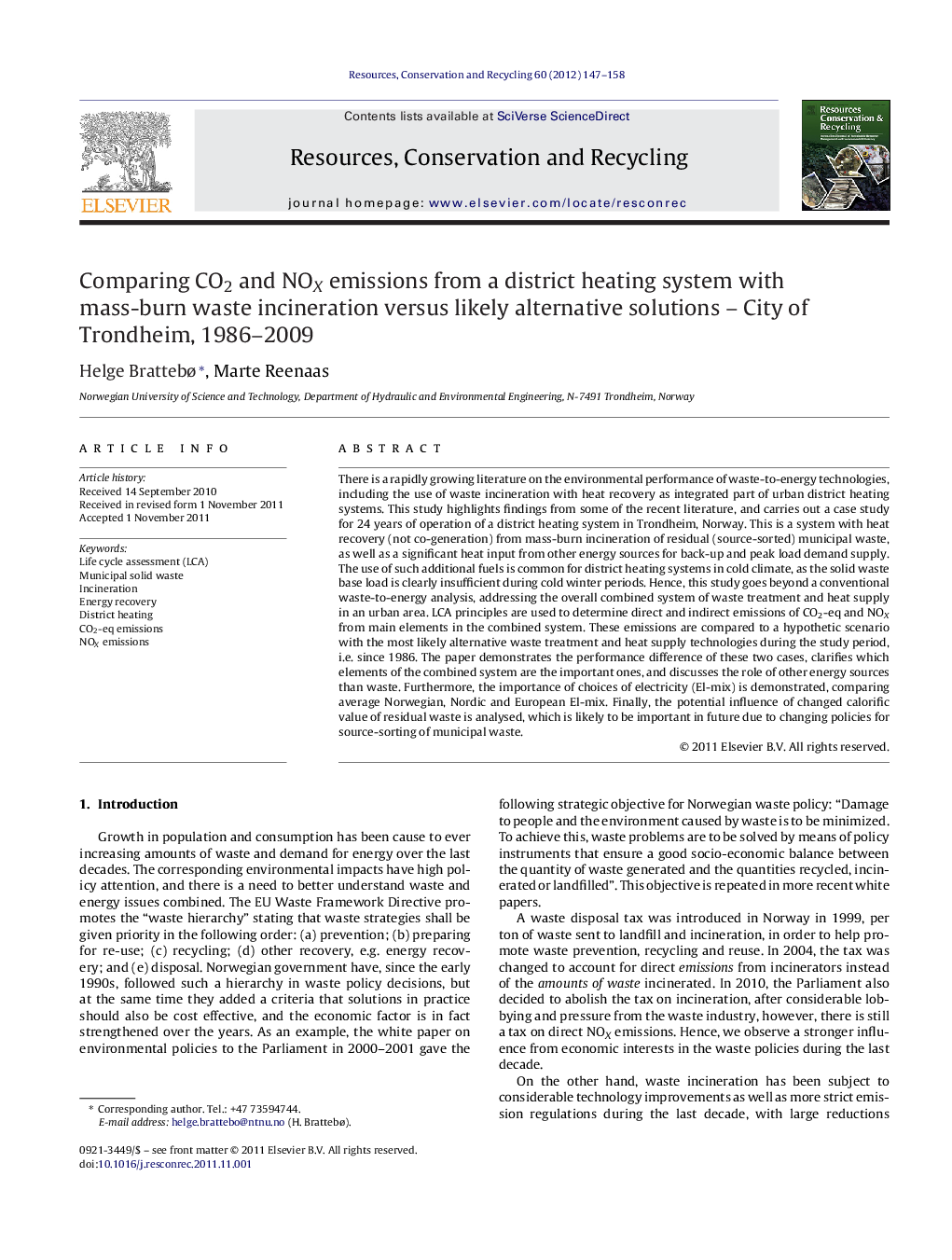| کد مقاله | کد نشریه | سال انتشار | مقاله انگلیسی | نسخه تمام متن |
|---|---|---|---|---|
| 1063320 | 1485729 | 2012 | 12 صفحه PDF | دانلود رایگان |

There is a rapidly growing literature on the environmental performance of waste-to-energy technologies, including the use of waste incineration with heat recovery as integrated part of urban district heating systems. This study highlights findings from some of the recent literature, and carries out a case study for 24 years of operation of a district heating system in Trondheim, Norway. This is a system with heat recovery (not co-generation) from mass-burn incineration of residual (source-sorted) municipal waste, as well as a significant heat input from other energy sources for back-up and peak load demand supply. The use of such additional fuels is common for district heating systems in cold climate, as the solid waste base load is clearly insufficient during cold winter periods. Hence, this study goes beyond a conventional waste-to-energy analysis, addressing the overall combined system of waste treatment and heat supply in an urban area. LCA principles are used to determine direct and indirect emissions of CO2-eq and NOX from main elements in the combined system. These emissions are compared to a hypothetic scenario with the most likely alternative waste treatment and heat supply technologies during the study period, i.e. since 1986. The paper demonstrates the performance difference of these two cases, clarifies which elements of the combined system are the important ones, and discusses the role of other energy sources than waste. Furthermore, the importance of choices of electricity (El-mix) is demonstrated, comparing average Norwegian, Nordic and European El-mix. Finally, the potential influence of changed calorific value of residual waste is analysed, which is likely to be important in future due to changing policies for source-sorting of municipal waste.
► We examined CO2-eq and NOX emissions from an urban district heating system over 24 years.
► This was compared with an alternative system for municipal waste and heating of buildings.
► District heating gave large system benefits for CO2-eq but not for NOX.
► Peak-load fuels and electricity mix assumptions play an important role in such systems.
Journal: Resources, Conservation and Recycling - Volume 60, March 2012, Pages 147–158